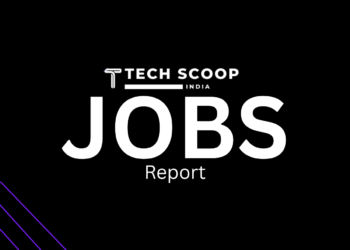India’s tech job market in mid-September 2025 is navigating a landscape of cautious optimism amid global trade tensions and accelerating AI adoption. While emerging technologies continue to fuel demand for specialized roles, hiring sentiment has softened due to tariff risks and cost pressures, with projections for a 7% decline in IT hiring for 2025 compared to initial estimates. The sector, however, remains a powerhouse, with NASSCOM forecasting the addition of 126,000 net jobs in FY25, bringing the total workforce to 5.8 million. Here’s an in-depth analysis of the latest trends in India’s tech employment for the week of September 8–14, 2025, informed by industry reports and discussions on X.
Jobs Overview: Cautious Hiring Amid Global Headwinds
Hiring in India’s tech sector is projected to slow in H2 FY26, with a 7% year-on-year drop in the first half of 2025, falling short of earlier targets by 150,000 roles. This week, posts on X highlighted concerns over U.S. tariff threats, with 90% of IT firms adopting a cautious stance on recruitment due to global trade uncertainties. Despite this, the overall market shows resilience, with white-collar hiring up 11% year-on-year in June 2025 per Naukri’s JobSpeak Index, and NASSCOM’s CXO Survey indicating 82% of executives planning a 5%+ increase in digital spending for CY25, particularly in AI. The unemployment rate held steady at 5.4% for Q2 2025, but tech-specific additions are tempered by automation impacts.
Key Sectors Driving Tech Hiring
Demand remains robust in high-growth areas aligned with digital transformation:
- Artificial Intelligence (AI) and Machine Learning (ML): AI roles, including data scientists and ML engineers, saw 76% and 70% hiring growth respectively in recent months, with projections for a 20% overall increase in emerging tech jobs in 2025. Salaries for AI architects could reach ₹50 lakh annually.
- Cybersecurity and Cloud Computing: These sectors are expected to surge 75% in roles, driven by a need for over 2 million cloud professionals by FY25 and rising threats, with penetration testers earning up to ₹11.8 LPA.
- Data Analytics and DevOps: Analytics postings rose 15.4% in the past quarter, while DevOps engineers with AWS expertise see 10% salary hikes across levels.
- Gig Economy and ITeS: The IT gig workforce is set to triple to 24 million by 2030, contributing 10% to sector growth, with flexible roles in fintech and e-commerce gaining traction.
Notable Trends and Roles
Software development roles comprise 70% of listings, but AI-driven efficiencies are reshaping the market—exemplified by Oracle’s reduction from 40,000 employees in 2017 to 27,000 in 2025, including 3,000 recent layoffs, despite a near-$1 trillion market cap. Entry-level hiring is rebounding with a 40% projected growth, offering salaries 30% above norms, while mid-senior roles (7–10 years) focus on niche expertise. Attrition rates have eased to 18–25%, with retention boosted by stock options and hybrid models—68% of firms now offer flexible work. Global Capability Centers (GCCs) are ramping up fresher hires by 50%, with salaries 30% higher than traditional IT. X discussions underscore AI’s role in displacing mundane jobs while creating high-value opportunities.
Regional and Employer Dynamics
Bengaluru, Hyderabad, and Mumbai dominate, with 83% of tech jobs in megacities, though Tier-2/3 cities like Chandigarh and Coimbatore saw a 5% year-on-year rise in openings. GCCs, projected to employ 2.5–2.8 million by 2030, are key drivers. Major employers like TCS (planning 12,000 global cuts but 4.5–7% hikes) and Infosys are restarting campus hiring, while global firms like Microsoft and Amazon prioritize AI talent. U.S. policy debates on H-1B visas and outsourcing taxes (up to 25%) are amplifying calls for domestic hiring.
Challenges: Skill Gaps and External Pressures
Only 42.6% of graduates are employable, per the Mercer-Mettl Index, with 63% of workers needing upskilling by 2030—especially in AI and cybersecurity. Global tariffs and a 13% decline in AI-exposed early-career roles add strain, alongside 38% of employers citing automation for job reductions. Pay transparency lags, with just 18.3% of postings disclosing salaries. X sentiment reflects anxiety over outsourcing backlash and AI job displacement.
Outlook for Q3 2025
NASSCOM anticipates 15–20% growth in tech opportunities, with AI, cloud, and cybersecurity leading, supported by a 15–20% rise in upskilling budgets. The ITeS sector could expand 20%, but muted demand persists for two quarters amid trade risks. Government initiatives like IndiaAI Mission aim to bridge gaps, though 18 million professionals eye overseas roles annually. Skill-based hiring will prioritize over degrees, fostering diverse talent pools.
Conclusion
Mid-September 2025 paints a picture of India’s tech job market as resilient yet challenged by global uncertainties and technological shifts. With surging demand for AI and cloud expertise offset by hiring slowdowns, the focus on upskilling and flexible models will define the path forward. Starting this week, Tech Scoop India will deliver these jobs reports every Monday, empowering our readers with the insights to navigate this dynamic landscape.
As Michael Cunningham, CEO of Tech Scoop India, states, “In an era of rapid tech evolution, our weekly reports are your compass—guiding professionals through opportunities and equipping leaders to build tomorrow’s workforce with foresight and agility.” Stay tuned to Tech Scoop India for weekly updates on India’s tech jobs trends, available every Monday.

















